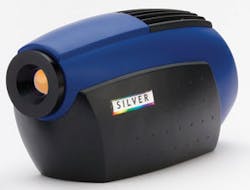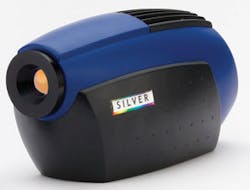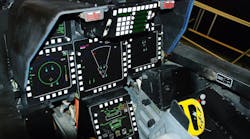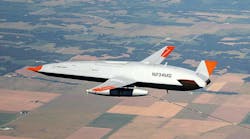CROISSY-BEAUBOURG, France - Systems integrators at aircraft engine manufacturer Snecma in Villaroche, France, needed a camera for remote noncontact fatigue testing of engine turbine blades. They found their solution from Cedip Infrared Systems in Croissy-Beauborg, France.
Snecma designers are using the Cedip Silver 450M thermal infrared camera to improve the design of their company’s aero-engines. The camera enables them to improve their understanding of the behavior of differently treated engine turbine blades when subjected to extreme vibration testing.
Snecma, a SAFRAN Group company, designs, develops and produces engines for civil and military aircraft, launch vehicles and satellites.
To simulate vibration conditions, researchers mounted a turbine blade on a fixed, rigid support and subjected it to powerful pulsated air blasts considerably in excess of what would be encountered in an aero-engine even in extreme use. They induced crack propagation by gradually increasing the frequency of the intense air blasts to the resonant frequency of the turbine blade.
The Cedip camera enabled engineers to pinpoint the exact stress limit of a range of differently treated turbine blades as the appearance of a crack is preceded by a localized heating effect.
During crack propagation the temperature at this point rises by several hundreds of degrees. However as the point is very small and the crack propagation process very fast (a few milliseconds) this places great demands on the IR camera in terms of the need for excellent spatial definition, high frame frequency, and large dynamic range (ambient to 800 degrees Celsius).
By incorporating an integral optical front end, Snecma engineers were able to focus on microscopic areas of turbine blades then using the bayonet mounting quickly to change the lens to adapt the field of view for turbine blades of different sizes.
Transferring images at a full 14-bit dynamic range via a CAMLINK interface to a remote PC enabled engineers to record a complete 15 minute experiment with remarkable thermal discrimination from ambient to 800 C.
Using additional functionality within the Silver 450M camera software, Snecma were able to integrate IR data with readings from strain gauges also installed on the turbine blades under test.
The Silver 450M is for users of infrared technology who want to perform thermal imaging at ultrafast frame rates with high sensitivity and accuracy at an affordable cost. Incorporating ROIC technology the Silver 450M’s 320-by-240-pixel format indium antimonide detector delivers 400 Hz full-frame rate while maintaining linearity and sensitivity.
Offering a sub-array windowing mode with integration time adjustable in 1-microsecond increments and smart external triggering capability the Silver 450M is able to synchronize image capture to transient events.
For more information contact Cedip online at www.cedip-infrared.com.




